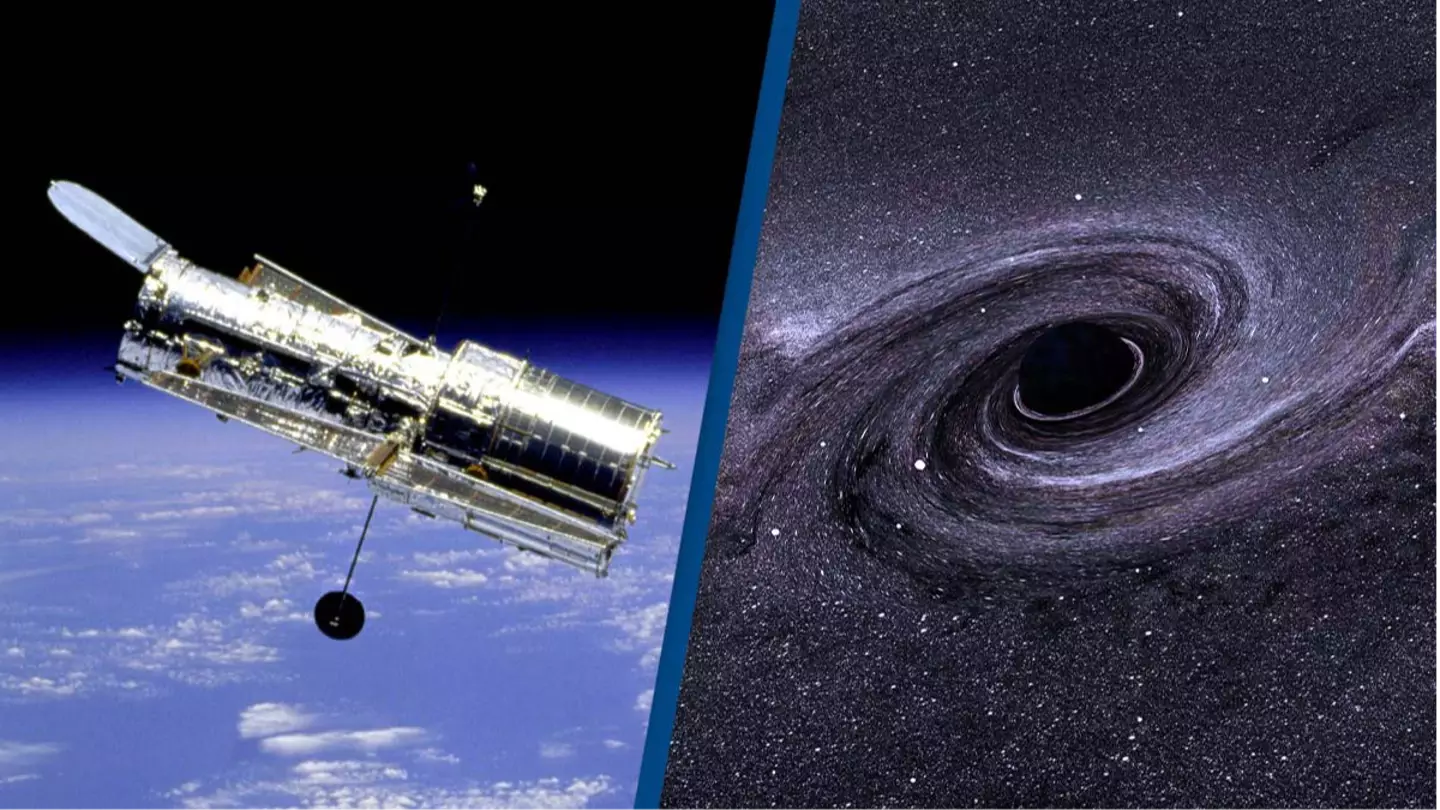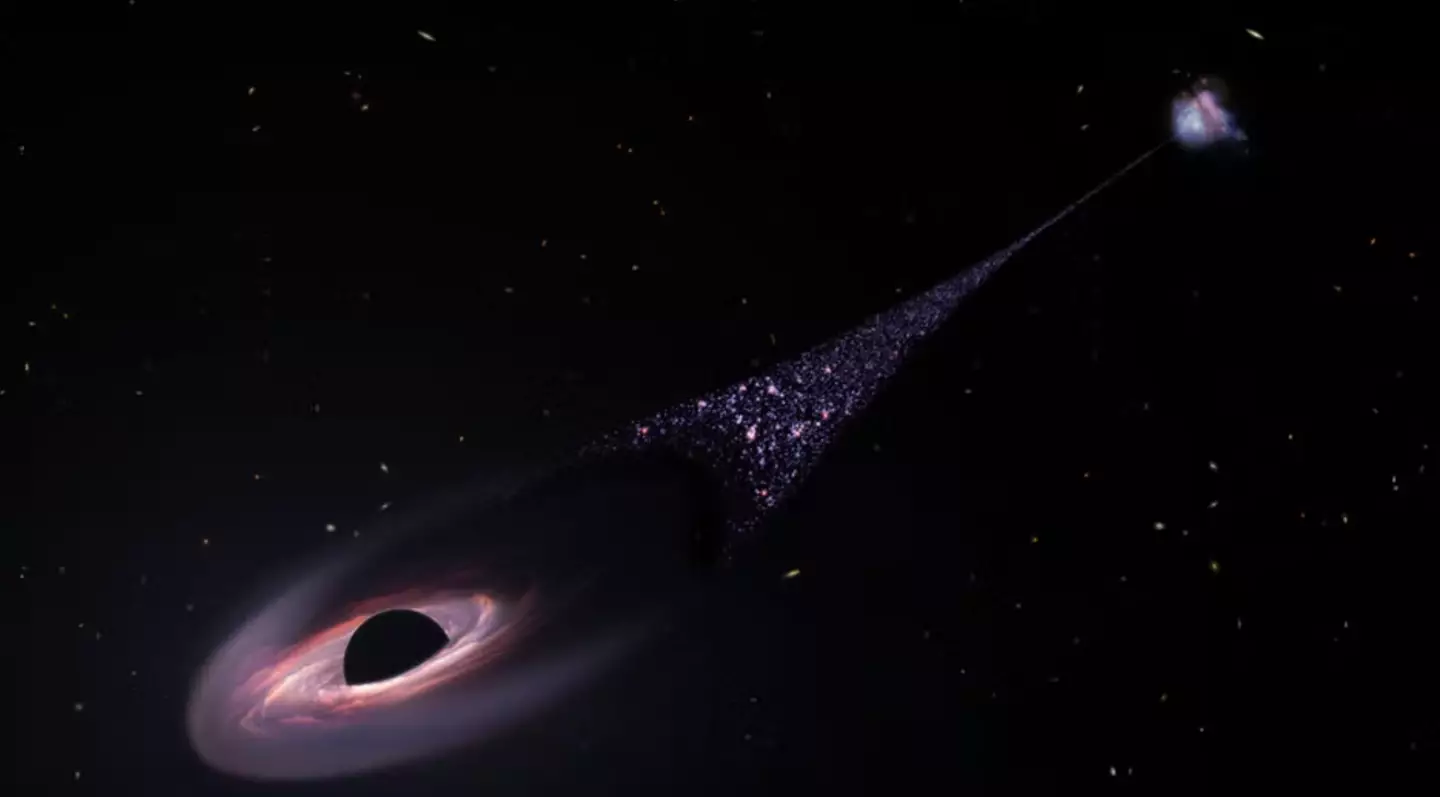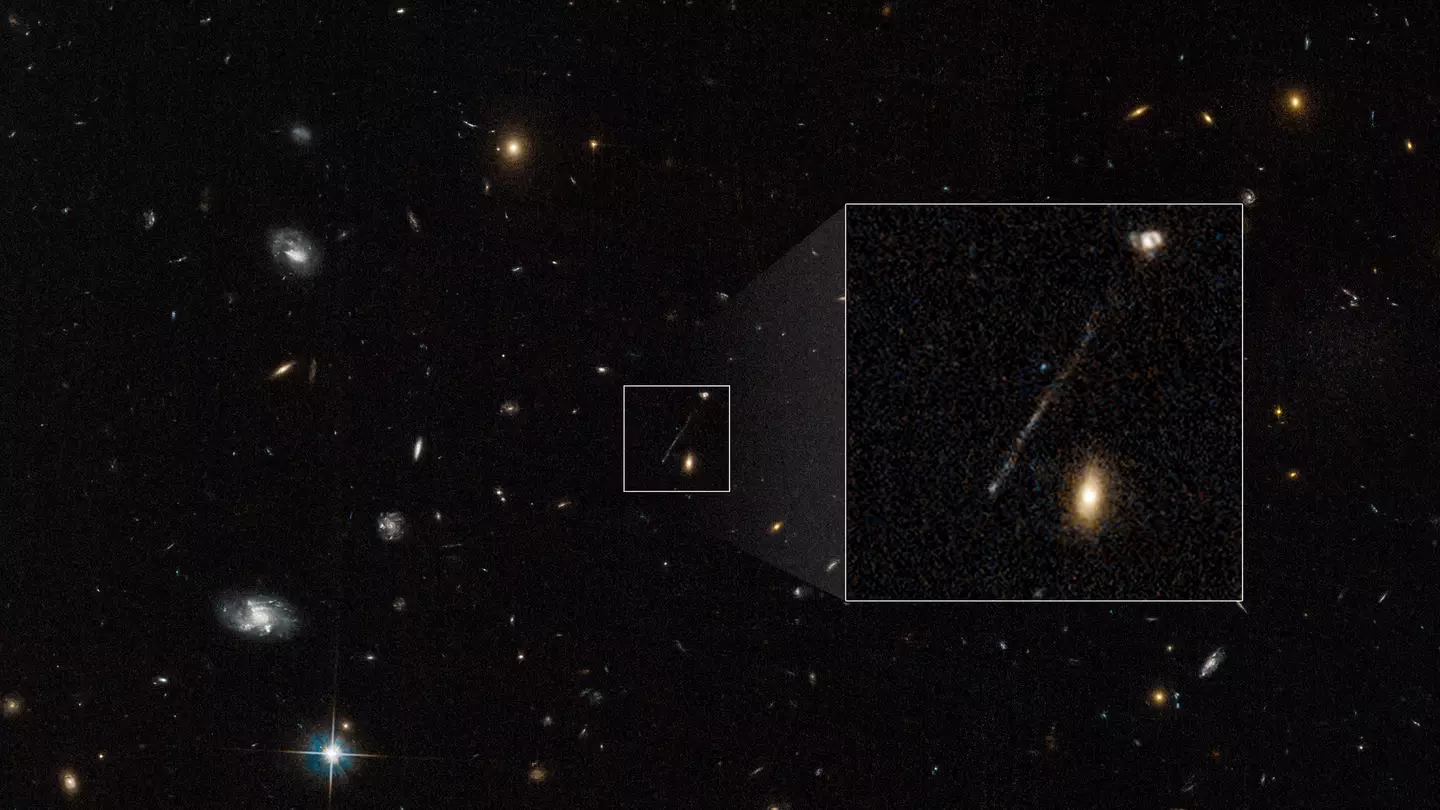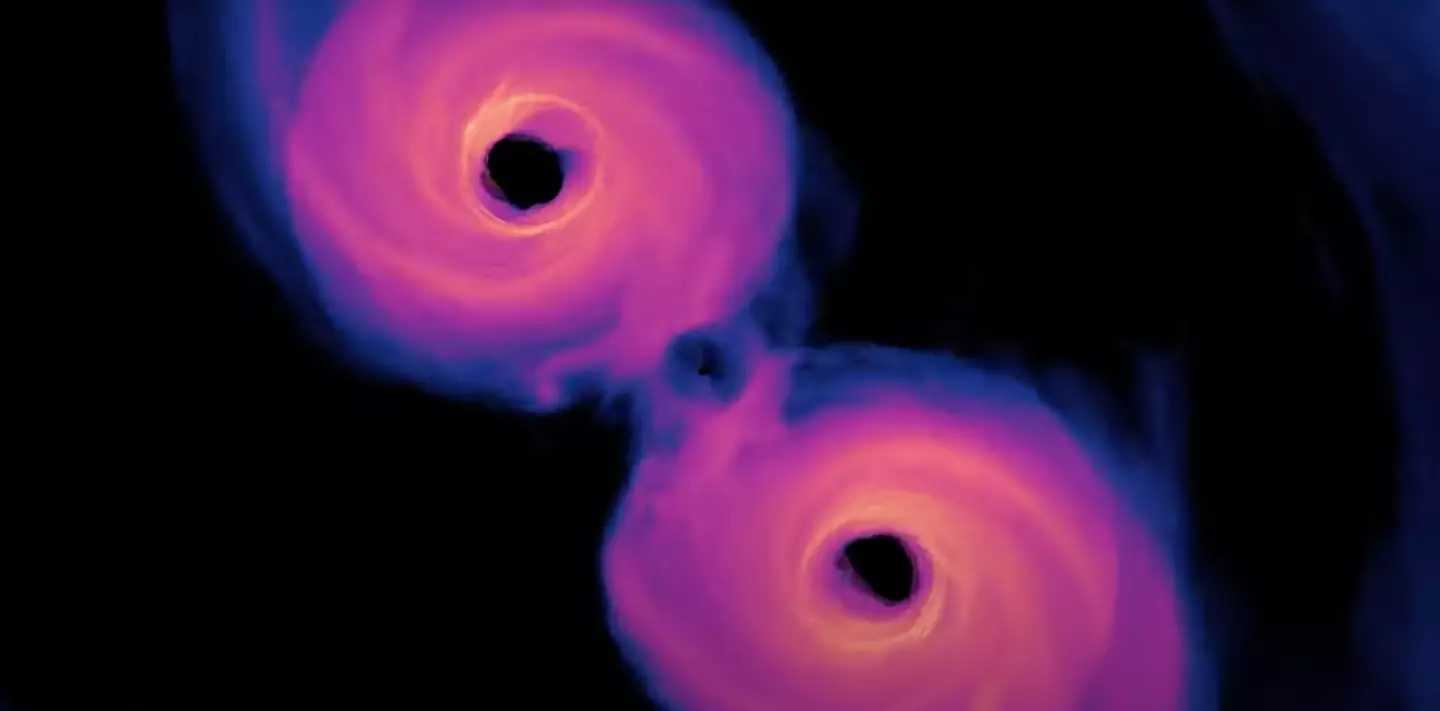
NASA’s Hubble Space Telescope has picked up images of a possible 'runaway' black hole shooting across the universe.
Dubbed the 'invisible monster' by NASA, a supermassive black hole weighing 'as much as 20 million Suns' is currently streaking across space.
The phenomenon was accidentally captured by the Hubble Telescope and first appeared as 'scratches'.
However, upon further inspection, NASA believes that it is a black hole which has been thrown out of its home galaxy.
Advert
It’s also thought to be leaving behind a 200,000-light-year-long 'contrail' of newborn stars.
“We think we’re seeing a wake behind the black hole where the gas cools and is able to form stars,” says Pieter van Dokkum of Yale University.

“So, we’re looking at star formation trailing the black hole. What we’re seeing is the aftermath. Like the wake behind a ship we’re seeing the wake behind the black hole.” he added.
Advert
Professor Van Dokkum spotted the images from the telescope himself and has documented the findings via his new paper, A Candidate Runaway Supermassive Black Hole Identified by Shocks and Star Formation in its Wake.
The paper has been published in The Astrophysical Journal Letters.
Talking about the chance discovery, he said: “I was just scanning through the Hubble image and then I noticed we have a little streak.’
“I immediately thought, ‘oh a cosmic ray hitting the camera detector and causing a linear imaging artefact’.
Advert

"When we eliminated rays we realised it was still there. It didn’t look like anything we’ve seen before.”
Apparently, if the ‘runaway’ black hole was in our solar system, it could travel between the Earth and the Moon in just 14 minutes.
Van Dokkum also described the star trail as 'quite astonishing, very, very bright and very unusual'. The hypothesis for the trail is believed to be due to compressed gas from when the black hole was launched into space - however, it is still not known how that exactly works.
Advert
Astronomers believe it was formed by a cluster of black holes that have collided together, with the first two black holes being formed when two galaxies merged together about 50 million years ago.
Then, it is thought that the two supermassive black holes collided, with a galaxy that its own black hole also somehow joining the mix.

This then seemingly lead to one of the black holes being thrown out into space, however, it is still unclear which one this was.
Advert
Scientists are hoping to confirm that the origin of the streaking black hole and are due to start undertaking follow-up observations to confirm how it has come about.
If NASA’s theories are correct, then this will be the first time that a black hole has been confirmed to have been kicked out of its home galaxy.
Exciting stuff.
Topics: Space, NASA, Black Hole
